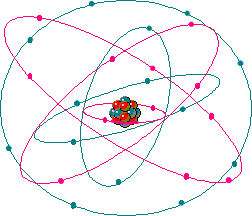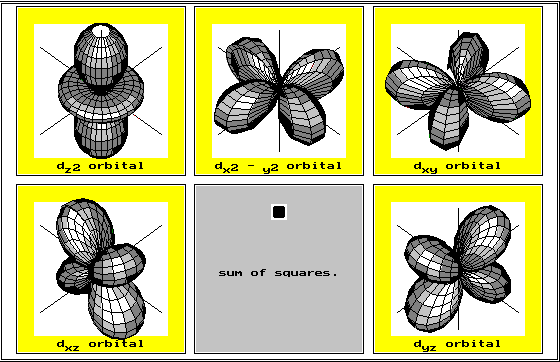Modern Theory

Modern Atom Theory
§ The Quantum Mechanical Model
§ A theory explaining how electrons orbit around the nucleus, and a better explanation of how the atoms react and act the way they do.
Some things remained the same
§ Electrons are still around a nucleus made up of protons and neutrons.
§ Electrons still follow the rules of quantum mechanics.
§ Electrons still have layers of increasing principal energy levels.
Some new ideas introduced
§ Concept of sub levels inside each principal energy level.
§ Protons and neutrons are made of smaller particles called quarks.
§ In modern atomic theory, there can be as many as 4 different types of atoms (or sub-levels) in one principal energy level.
Atomic Orbital
§ Two electrons can fit into each orbital, no matter what sub-level the orbital is in.
§ Only 4 sub-levels exist.
§ All sub levels do not necessarily have to fill their maximum number of electrons.
§ The highest principal energy level is presently 7.
Simplified idea diagram of the Modern Theory

Simplified Modern Theory: not far off from the Bohr model, but instead of thinking of it as orbits, they are fields which the electrons can be found in.

Atomic orbitals are mathematical descriptions of where the electrons in an atom (or molecule) are most likely to be found. These descriptions are obtained by solving an equation known as the Schrödinger equation, which expresses our knowledge of the atomic world. As the angular momentum and energy of an electron increases, it tends to reside in differently shaped orbitals. The orbitals corresponding to the three lowest energy states are s, p, and d, respectively. The illustration shows the spatial distribution of electrons within these orbitals. The fundamental nature of electrons prevents more than two from ever being in the same orbital. The overall distribution of electrons in an atom is the sum of many such pictures. This description has been confirmed by many experiments in chemistry and physics, including an actual picture of a p-orbital made by a Scanning Tunneling Microscope.
